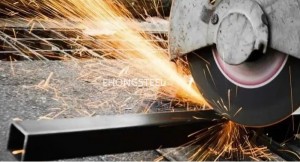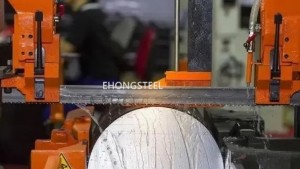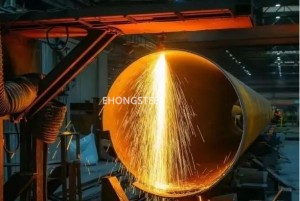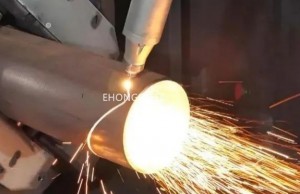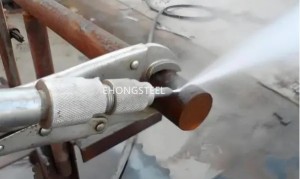The first step in metal processing is cutting, which involves simply severing raw materials or separating them into shapes to obtain rough blanks. Common metal cutting methods include: grinding wheel cutting, saw cutting, flame cutting, plasma cutting, laser cutting, and waterjet cutting.
Grinding wheel cutting
This method uses a high-speed rotating grinding wheel to cut steel. It is a widely used cutting method. Grinding wheel cutters are lightweight, flexible, simple, and convenient to use, making them widely adopted in various settings, particularly on construction sites and in interior decoration projects. They are primarily used for cutting small-diameter square tubes, round tubes, and irregular-shaped tubes.
Saw cutting
Saw cutting refers to the method of dividing workpieces or materials by cutting narrow slots using a saw blade (saw disc). Saw cutting is performed using a metal band saw machine. Cutting materials is one of the most basic requirements in metal processing, so saw machines are standard equipment in the machining industry. During the sawing process, the appropriate saw blade must be selected based on the material's hardness, and the optimal cutting speed must be adjusted.
Flame Cutting (Oxy-fuel Cutting)
Flame cutting involves heating metal through a chemical reaction between oxygen and molten steel, softening it, and eventually melting it. The heating gas is typically acetylene or natural gas.
Flame cutting is only suitable for carbon steel plates and is not applicable to other types of metal, such as stainless steel or copper/aluminum alloys. Its advantages include low cost and the ability to cut materials up to two meters thick. The disadvantages include a large heat-affected zone and thermal deformation, with rough cross-sections and often slag residues.
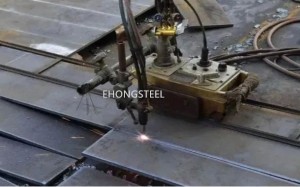
Plasma Cutting
Plasma cutting utilizes the heat of a high-temperature plasma arc to locally melt (and vaporize) the metal at the cutting edge of the workpiece, and removes the molten metal using the momentum of the high-speed plasma to form the cut. It is generally used for cutting materials with a thickness of up to 100 mm. Unlike flame cutting, plasma cutting is fast, especially when cutting thin sheets of ordinary carbon steel, and the cut surface is smooth.
Laser cutting
Laser cutting uses a high-energy laser beam to heat, locally melt, and vaporize metal to achieve material cutting, typically used for efficient and precise cutting of thin steel plates (<30 mm).Laser cutting quality is excellent, with both high cutting speed and dimensional accuracy.
Waterjet Cutting
Waterjet cutting is a processing method that uses high-pressure water jets to cut metal, capable of performing one-time cutting of any material along arbitrary curves. Since the medium is water, the greatest advantage of waterjet cutting is that the heat generated during cutting is immediately carried away by the high-speed water jet, eliminating thermal effects.
Post time: Aug-01-2025


